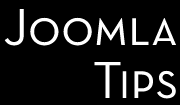Baba Yaga is an entity that haunts the dreams of children and a common threat that parents use when their children misbehave in Slavic countries across Eastern Europe.
But in the world of malware, BabaYaga is a form of malware that can update itself, use antivirus functionality and more. Much like the mythical creature, BabaYaga malware has the potential to haunt Joomla/WordPress or, in fact any PHP site administrators and IT support staff.
